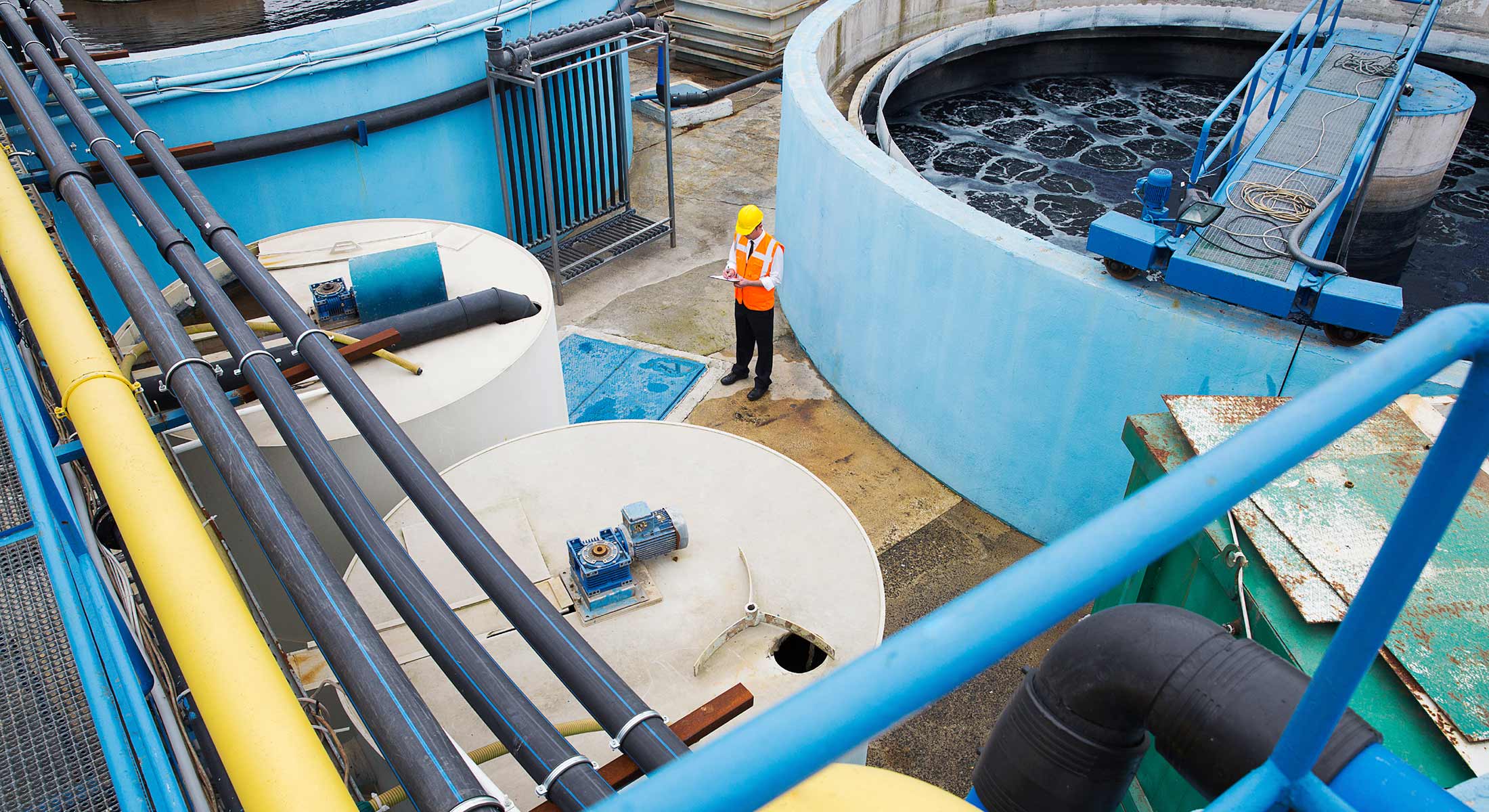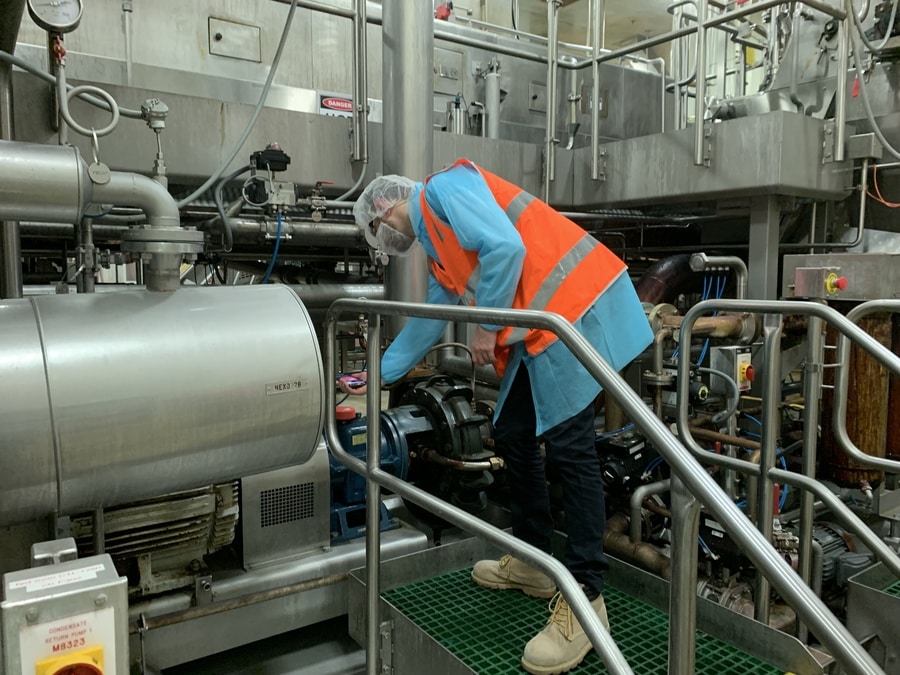Digital Condition Monitoring Takes Pressure Off Water Utility Industry

The adoption of smart monitoring technology in operation has reduced the stress for many water utility operators. Drives and motors in the industry are often old and outdated but are considered too expensive to replace, or put low on the priority list. Simply installing a smart sensor to continuously monitor machine condition would lead to greater efficiency and significant maintenance cost savings.
The high total cost of ownership and leakage rates over the asset lifecycle are key metrics for water and wastewater utility companies to consider. This becomes even more important when you consider that we’re seeing an increase in average age of infrastructure within the industry. That means many assets are not performing at their optimal efficiency – becoming prone to failure, and unable to keep up with significant changes to technology. This isn’t an issue exclusive to water utilities, so all is not lost – there are options out there to bridge the divide between old infrastructure and ‘Industry 4.0’. Providing not only a stop-gap for businesses who might not be able to update their infrastructure just yet, but also a solution to cater to the issues of tomorrow.
IIoT condition monitoring solutions like FitMachine are available to provide foresight for potential machine failures and real-time reporting of inefficiencies that are often imperceptible to maintenance teams. Such solutions are designed to fit in with existing infrastructure, and provide a platform to build on for the future. We’re supporting enterprises in shifting their maintenance processes from reactive to proactive. For water utility companies that means no more unplanned downtime, avoiding critical machine failures, lower maintenance costs, and safer maintenance teams.
Where real-time condition monitoring can support utility businesses
Variable speed drives (VSDs) are commonly used within machinery to also help control many aspects of the process (keeping water pressure stable, avoiding water hammer, or optimising well exploitation). VSDs are also key to throttling energy consumption – and that means the ability to throttle costs and load on equipment / infrastructure.
Here’s where a condition-based, equipment monitoring system like FitMachine shows its worth. By self-attaching sensors to your equipment, you can measure multiple indexes from the pumps and garner insightful information that gives managers a full picture of their machine’s current performance. The smart sensors register sound, vibration, temperature, machine orientation and more to let your teams know how your equipment is functioning. In this way, there is no waiting until a significant, visible failure to occur before taking action. For instance, picking up a bearing fault early (normally imperceptible when conducting routine maintenance checks) allows teams to ensure the machine doesn’t run to failure, and doesn’t chew up significantly more energy to function.
This benefits organisations two-fold – in-depth can be collected remotely and unusual changes to machine operation are picked up early, allowing for better prioritisation of maintenance work. Add to that machine learning, and teams are now armed with a ‘lookout’ or ‘second opinion’ to make the right calls at the right time. Managers are informed of potential issues no matter where they are, they can share the information with teams and other stakeholders, and can react quickly. When it comes to maintenance, time is a critical factor – a leakage or fault that is early detected can save thousands of dollars in maintenance costs, energy consumption, lost throughput and more.
Aside from that, a digital condition monitoring system provides a historical view of your equipment and a proper picture of machine lifecycle to support infrastructure and asset planning. At its best, such a solution can communicate information clearly through visuals – for example, showcasing a specific leakage/blockage event in a pump over a period of time, so that it can be better understood by relevant stakeholders and/or used as a benchmark by which to diagnose future problems.
There are many more applications for water utilities – allowing managers to compare different equipment, across multiple sites, for instance. Or comparig different error events and the effects on energy consumption. The list of applications goes on!
The more information you can collect, the better your detection gets and the quicker you can diagnose issues.
So what should organisations look for in a condition monitoring solution?
How to choose the right solution for your facility
As advanced these digital solutions are, they can also be daunting to companies who are looking to make the transition. To help managers make a decision, we have listed the important criteria to consider below:
Functionality
The whole purpose of a condition-based monitoring solution is to keep you aware of your equipment condition. Therefore, a great pick would be a solution that can measure the leading indicators of your pumps’ operations (such as vibration, sound and temperature) and arrange the data visually so that it easy for you to understand and manage your equipment (including the interface of the application, information processing)
It is also worth looking for extra features like grouping different equipment to view at once, or presenting data in clear graphs. These can make significant impacts on the adoption rate of the solution by your teams.
Integration ability
Integration potentital is one of the most important requirements for utility businesses when adopting a new technology. You can read our article about integration (and its importance) in the Industry 4.0 era here. A solution that supports data integration with other technologies and your existing core systems (CMMS, EAM etc.) will give you a significant advantage in leveraging the data you collect.
Easy installation
For water utility companies, equipment is often comprised of complicated components. There’s no sense looking for a complex monitoring solution – easy-to-install, self set up condition monitoring solutions will save a lot of time and cost, and help you make the digital transition faster.
An example of successful implementation
One of our water utility clients provided insight into how they detected an unusual change in their bearing that helped them save millions of dollars in maintenance costs. FitMachine detected the error 4 to 5 weeks early and prevented a serious functional failure. You can read the full case study here.
Looking to increase efficiencies in your business and not sure where to start? Register for a 30-day free trial and experience how FitMachine helps improve maintenance for your organisation. Simply sign up at https://learn.movus.com.au/trial
Image sourced from https://www.locustec.com/blog/rethinking-urban-water-management/

